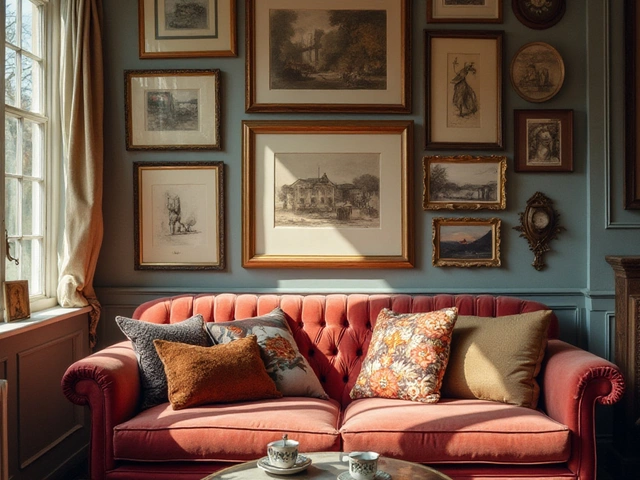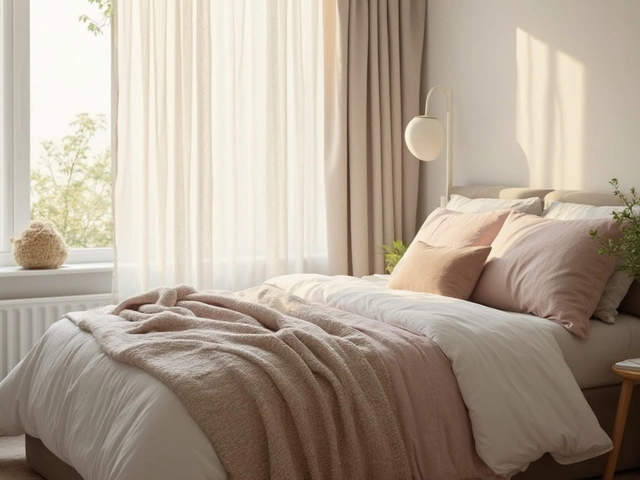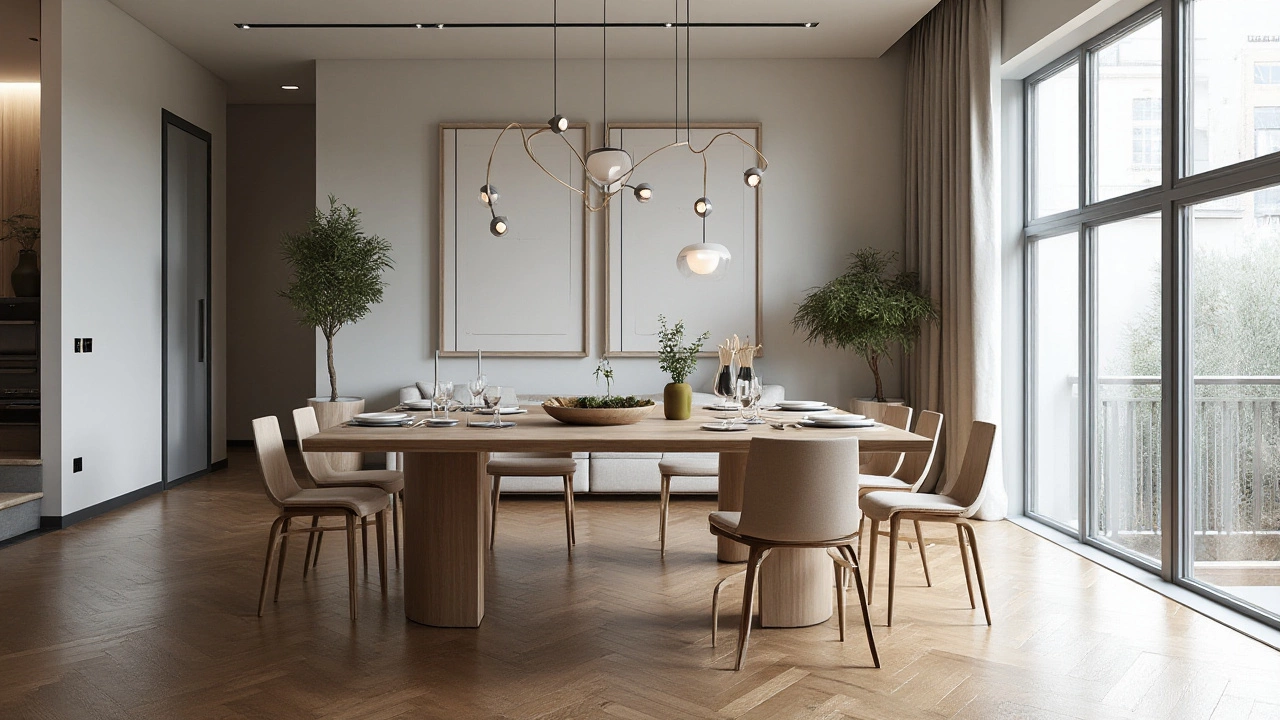
Redesigning your dining room doesn't mean you're stuck with the traditional table and chair setup. If you're short on space or simply crave something different, there's a world of creative options to explore.
Imagine hosting a dinner party with a setup that adapts to your needs, or enjoying breakfast at a stylish bar integrated into your kitchen. The modern home is evolving, and so should your dining space.
From foldable wonders to ingenious convertible designs, the alternatives are as endless as they are exciting. Let's delve into some unique ideas that challenge convention while offering practicality and flair.
- Folding and Collapsible Tables
- Breakfast Bars and Kitchen Islands
- Convertible Furniture Solutions
- Modular Dining Furniture
- Multifunctional Design Trends
Folding and Collapsible Tables
In today's fast-paced world, where living spaces are increasingly designed to maximize utility and style, folding and collapsible tables have become a mainstay. These tables are marvels of engineering, crafted to provide full functionality while taking up minimal space when not in use. They are the ideal solution for city dwellers and small home owners who are eager to maintain a dining area without compromising on space. The greatest allure of folding tables is their versatility. A single piece can serve as a dining table during meals, a workspace during work hours, and be tucked away to create space when entertaining guests. This multipurpose nature is crucial in modern homes where every square foot counts.
A variety of folding tables are available, emphasizing both form and function. From the classic card tables that have been a fixture in homes for decades, to sleek designs using contemporary materials like tempered glass and metals, there's a style to suit every aesthetic. Take, for example, table designs that hinge from the wall, requiring only a pull to instantly transform a room. Such mechanisms are often employed in Scandinavian designs, exemplifying their renowned efficiency and minimalism. It’s no wonder that these tables are celebrated as much for their engineering as for their stylistic contributions.
The market is flooded with options, but a few brands have staked their claim in this niche. IKEA, with its ever-expanding catalog of innovative home solutions, offers tables like the NORDEN which can be folded down to a compact size but extend to accommodate several guests at once. Similarly, space-conscious companies in Japan and Hong Kong have championed designs that allow for even fuller collapsibility—perfect for micro-apartments. An interesting statistic is that, according to a market report, sales of folding furniture have increased by approximately 14% annually over the past five years, reflecting a growing demand driven by smaller residential spaces.
"Our vision was to make tables that not only transformed physical spaces but also the way people engage with them," says Monica Pedersen, a noted designer in the field of living space optimization. Her designs focus on the beauty of simplicity and the art of utility.
Integrating a folding table into your home is not only about choosing convenience; it brings a touch of clever design into everyday living. Whether it's a wall-mounted table that blends seamlessly into the room's decor or a portable fold-out option that can be stored under the bed, the right choice can significantly enhance your lifestyle. It's also an opportunity to embrace a minimalist ethos, reducing clutter and focusing on essential functionalities. The adoption of folding tables in dining spaces has thus become symbolic of smarter, more considerate living, uniting the aesthetic with the pragmatic in a dance that echoes through the very architecture of modern life.
Breakfast Bars and Kitchen Islands
One of the most dynamic alternatives to a traditional dining table is the integration of a breakfast bar or a kitchen island into your home. These versatile pieces not only save space but also elevate the functionality and style of your dining area. With homes increasingly adopting open-plan layouts, breakfast bars and islands are becoming more popular, blurring the lines between cooking, dining, and socializing spaces. They are no longer just a place to grab a quick bite but have transformed into central hubs for family interaction and entertainment.
When considering adding a breakfast bar, it’s essential to think about how it will harmonize with the rest of your kitchen. Many homeowners opt for a sleek, minimalist design that aligns with modern, industrial aesthetics, using materials like stainless steel and granite. Others choose warm wooden tones for a cozy, rustic feel. Regardless of the style, a well-designed breakfast bar can serve multiple purposes; it's a place for morning coffee, a midday snack, or a casual dinner. As lifestyle expert Jane Smith notes, "A breakfast bar not only maximizes your home's layout but also adds a social element to meal preparation."
Kitchen islands, on the other hand, offer an even greater scope of functionality. Apart from being a surface for meals, they often include additional storage space, power outlets, and even integrated appliances such as small ovens or wine coolers. This makes them incredibly useful for those who love to cook or entertain. Choose an island with seating on two or more sides to create a welcoming environment where guests can gather. According to a study by the National Kitchen and Bath Association, 70% of renovated kitchens now include an island, highlighting their significance in modern home design.
Installation requires careful planning. Begin by assessing the space you have available, ensuring there’s ample room for movement around the breakfast bar or island. This setup means you'll be ditching the traditional dining room set, which can open up the area even more. Placement is key: consider proximity to cooking appliances and the main kitchen area. Lighting is another crucial aspect; pendant lights not only illuminate your island but also add a touch of elegance. Remember that seating should complement the bar's height—typically, stools should be around 9-12 inches lower than the surface to be comfortable.
Another intriguing option involves portable breakfast bars over fixed installations. These can be moved or adjusted according to your requirements, providing flexibility uncommon with standard dining tables. Such pieces are ideal for smaller homes or apartments where adaptability is a necessity. Some innovative designs also feature foldable or extendable surfaces, allowing homeowners to adjust the size depending on the occasion. These space-saving furniture solutions are perfect for urban dwellers looking to maximize every inch of their living spaces.
In sum, breakfast bars and kitchen islands offer an innovative twist to traditional dining setups, advocating for creative furniture ideas that align with contemporary lifestyles. They transform routine cookery and dining into a shared, interactive experience, making them a worthy investment for any modern home. Embrace the trend of multifunctional furniture while reimagining your dining area, blurring the line between kitchen and entertainment spaces. Take the opportunity to bring social interactions into every meal, offering not just a place to eat, but a cornerstone of daily living.
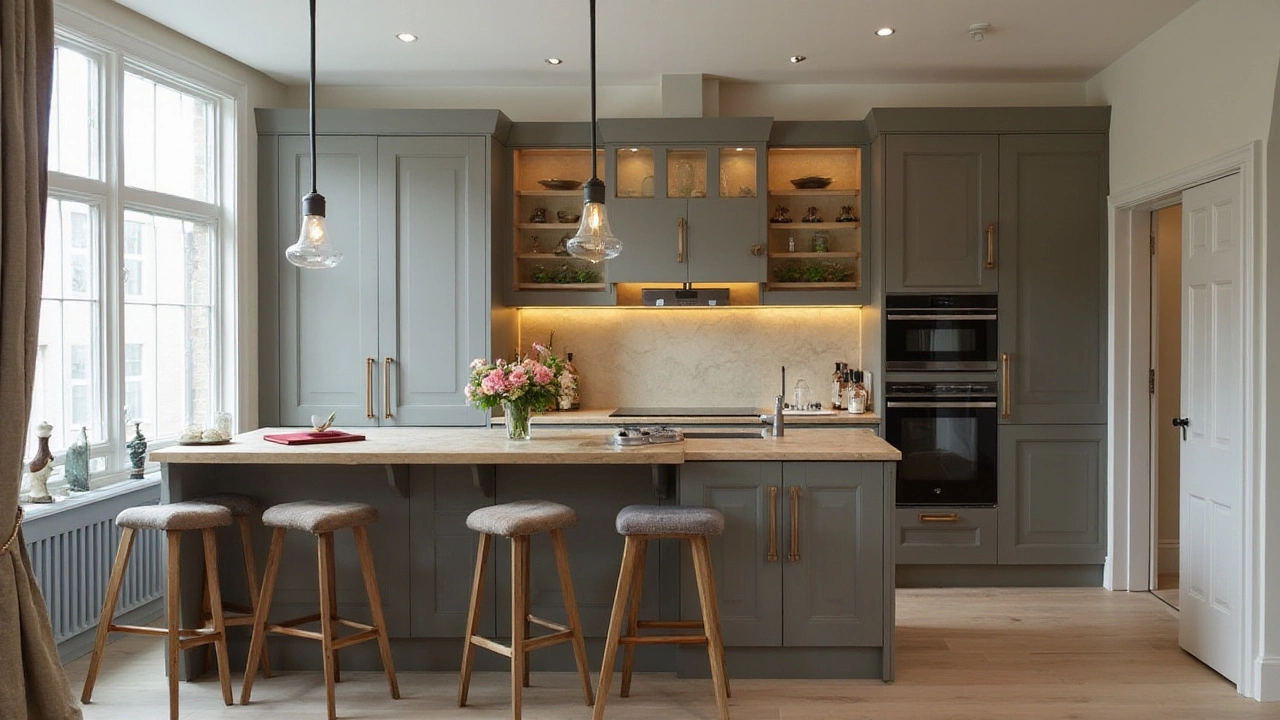
Convertible Furniture Solutions
When it comes to maximizing space in the dining room, convertible furniture solutions are some of the most ingenious designs available. These pieces are all about functionality and adaptability. Imagine a piece of furniture that morphs as per your requirement—perfect for small apartments or even as an upgrade in larger homes for added flexibility. One beautifully crafted example is the table that expands from a slim console into a full-sized dining table, allowing effortless transitions from work mode to dining sophistication. The artistry lies not just in their multi-purpose use but in the seamless transformation process that often leaves guests in awe.
Beyond simple expansion, convertible furniture often unites form and function, drawing inspiration from minimalist design principles. It's not just a matter of folding furniture away; instead, it imbues style with practicality. Whether you choose an extendable table with hidden storage drawers or a dining set that ingeniously stacks to save on space, these solutions are crafted with modern living in mind. The convenience of having furniture that adapts can radically change the dynamics of your home; it’s a shift from static interiors to dynamic, usable spaces that reflect today’s fast-paced, ever-changing lifestyle needs.
Space-saving furniture solutions typically involve unique mechanisms that incorporate the idea of transformation. They can range from tables with drop leaves that convert to make room for more diners, to those equipped with concealed benches that pull out from underneath for additional seating. A convertible table might be designed to pivot or slide, a motion that adds an element of intrigue. It’s furniture designed for those who appreciate sleek lines and modern aesthetics, meshed with the charm of functionality.
In the words of acclaimed interior designer Nate Berkus,
“Your home should tell the story of who you are, and be a collection of what you love, brought together under one roof.”This philosophy aligns well with the concept of integrated design—bringing elements into your dining area that resonate with your personal style while serving practical purposes. Opting for convertible pieces allows you to keep a polished, uncluttered look without sacrificing the ability to entertain or enjoy ample workspace when needed.
To better visualize the practicality of these furnishings, consider this: A recent study showed that incorporating multifunctional pieces can increase usable living space by 30% in urban apartments. This significant figure highlights how essential these clever designs have become not only in embracing compact living but also in enhancing existing layouts in a way that traditional furniture simply cannot match.
Modular Dining Furniture
The idea of modular dining furniture is reshaping how we think about dining spaces, making them more adaptable, functional, and stylish. These pieces are designed to cater to the dynamic needs of modern life, where space is often a premium, especially in urban environments. One of the fascinating things about modular furniture is its flexibility; these pieces can grow or shrink depending on your needs, offering an innovative solution for families who find their dining requirements changing over the years.
The secret behind the popularity of modular solutions lies in their construction. Typically composed of multiple pieces that fit together seamlessly, these furniture items allow homeowners to reconfigure their dining setup on a whim. An aspect to highlight is that modular pieces are not limited to a fixed space; they move around easily, making room for other activities or even transforming rooms altogether. Imagine a single piece of furniture that can serve as a dining table today and a workspace tomorrow, all by rearranging the modules.
This flexibility is incredibly appealing, as it allows for practical space-saving furniture. Many retailers, including renowned brands like IKEA, have embraced modular dining furniture as part of their lineups, often citing customer demand for increasingly versatile pieces. IKEA's modular table, for example, can be extended with additional leaves to accommodate more guests or halves quietly for a reduced footprint.
Adding to their appeal, modular dining furniture often brings a contemporary aesthetic that suits minimalist and modern interiors. This type of furniture usually employs clean lines, neutral tones, and sleek materials. However, the options are not limited in style alone; variety in color, material, and configuration is available to suit any taste. According to Sheila Bridges, a celebrated designer, 'Modular furniture allows you to get creative with your space; it empowers individuals to be the architects of their own environments.'
"This kind of flexibility in design empowers people to live seamlessly between different lifestyles." – Sheila Bridges
For those considering modular furniture, it is wise to visit stores in person, if possible, to handle and move the pieces, ensuring that they meet expectations in terms of ease of use and quality. While purchasing, evaluating the quality of materials and the durability of hinges and fastenings can save headaches later. Checking reviews for feedback on the long-term satisfaction and wear of the pieces can also be enlightening. With strategic choices, modular dining pieces can provide not just functionality, but also a visually pleasing element in one’s home.
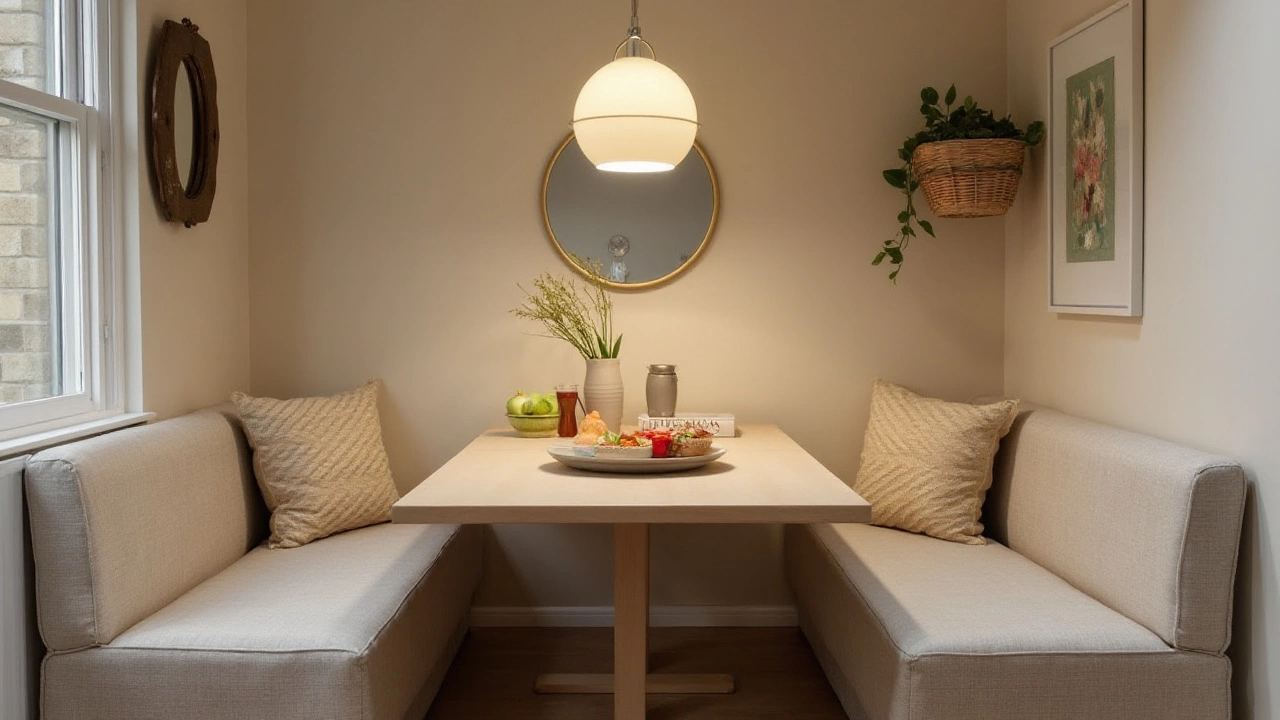
Multifunctional Design Trends
In today's fast-paced world, where maximizing space has become almost as essential as chic aesthetics, multifunctional design is gaining considerable popularity. This approach to interior design goes beyond practicality; it transforms areas into versatile spaces that adapt to various needs and occasions. If you find yourself living in a compact apartment or simply want to make your dining room more dynamic, multifunctional furniture might just be the ideal solution.
Consider the innovative dining table that seamlessly turns into a workspace. During the day, it can function as a desk perfect for working from home and by night, it converts into a sleek dining table for gatherings. Such furniture designs embrace the growing trend of fluid spaces, where rooms aren't strictly defined by their initial purpose. The rise of remote work has driven this trend, propelling homeowners to seek furnishings that are as flexible as their lifestyles.
An intriguing example of this trend is furniture pieces equipped with hidden storage. Not only do these designs help maintain a clutter-free environment, but they also offer easy access to dining essentials like tableware and linens. This dual-purpose utility is particularly valuable in urban apartments where every inch counts. Renowned interior designer Nate Berkus explains,
"Designing a space to be functional does not mean you have to compromise on style. Multifunctional pieces allow you to marry practicality with aesthetics, creating a home that tells your unique story."
Moreover, the embrace of multifunctional furniture aligns with the eco-conscious mindset of many modern homeowners. Rather than investing in numerous items for every separate activity, one can opt for a single, well-designed piece that lasts. This not only minimizes consumption but also fosters a more sustainable approach to living. According to a report by the Sustainable Furnishings Council, consumers are increasingly looking for eco-friendly products that also serve multiple purposes. Additionally, statistics show that smart furniture choices can significantly impact energy and resource conservation.
Importantly, these designs also spark creativity in how spaces are used. Consider the dining table that folds out into a ping-pong table or a cozy breakfast nook that doubles as a reading corner. Such adaptability allows for spontaneous fun and relaxation without the need for excessive furniture or accessories. Whether you're hosting a dinner party, need space for an impromptu workout, or just want to relax with a book, multifunctional designs ensure that your space can quickly and easily shift into whatever form you require.
To explore these design opportunities, start by assessing your space and pinpointing the core activities you want to support. Then, look for furniture that not only meets these needs but also complements your aesthetic vision. Whether it's a sleek, extendable dining table that morphs into a work area or a cleverly designed ottoman with storage, the possibilities are truly endless. Incorporating these pieces will undoubtedly elevate your dining room to a modern, efficient, and multifunctional haven.

